WE’RE celebrating the holidays with Harold F. Cruickshank—creator of those great Aces of the Western Front’s Hell Skies—Red Eagle, Sky Wolf, and Sky Devil. But this holiday season it’s going to be a down home Christmas featuring Cruickshank’s Pioneer Folk stories from the pages of Range Riders Western (1945-1952) on Mondays and Fridays; and Cruickshank’s own recollections of homesteading life from The Edmonton Journal’s The Third Column on Wednesdays.
The Edmonton Journal regularly set aside the third column on its editorial page for submissions from freelance writers, of which Cruickshank was an occasional contributor over the years. His columns frequently focused on his life growing up as a homesteader with his father and brother who had all immigrated from Scotland in 1905 to Barrhead, Canada along the famed Klondike Trail, just to the northwest of Fort Edmonton.
It’s Wednesday, so here’s another of Cruickshank’s Third Columns.
The Third Column
by Harold F. Cruickshank • Edmonton Journal, Edmonton, Canada • Saturday, 23 May 1953
Bad Seasons and Good
AFTER forty-seven years of residence in these latitudes, I have found that nature balances her seasons fairly well. Over the long term and as a whole, we haven’t suffered too much through weather capers.
I think today, especially, of our first springtime in this country our first spring (question mark) in the hinterland.
We had trekked in, in the summer of 1906, and had somehow thrived as we survived that most terrible winter on record, the winter of 1906-07. We had, by back-breaking toll, with other work accomplished, cleared five acres of heavy willow-studded land. When the snows at last started to melt, we looked eagerly to the firing of the brush piles, the plowing and the sowing of that first patch of “chocolate-loam” soil. (The descriptive phrase is from publicity pamphlets we had read In Britain in 1905.)
We had, in the winter, hauled in seed oats a distance of seventy miles, over drifted trails. We now saw miniature creeks become raging rivers, for the snow had been heavy, and the spring season tardy indeed.
As I remember it, it was the first week in June before we, at last, got our first few bushels of oats harrowed in.
Five acres of oats! How insignificant now, but how important then! We watched for the first green blades to shoot up through the inadequately tilled sod. When we saw them, we were thrilled!
It was a reward, indeed, for those endless days of toil—grubbing out those horrible willow clumps with axe and mattock, or grub-hoe.
* * *
We were informed by more experienced settlers that the crops of 1907 would never ripen. We were more optimistic, especially as we watched the rapid growth of the green oats.
The “more experienced” settlers were right: An early frost struck the ripening grain and all we had for our efforts was feed oats, though that was something. We had a fairly good harvest of feed oats. Our horses would need them, in bundles and as threshed grain. Sadly enough, though, my father, who in his boyhood had herded sheep in the Highlands of Scotland, bought a small band of sheep. He had visions of quick-turn-over—lambs and wool crop. We, his two sons and George, a youth we had brought out with us, had visions of endless sheep-herding in a wild, coyote-infested wilderness. . . .
Our “visions,” pessimistic as they were, bore material fruit. . . .
It might have been better, or not so bad, had it not been for Samantha-Jane, the bell ewe. Samantha-Jane was the homeliest, most exasperating creature I have ever known—a she-devil if there ever was one.
Tall, rich peavine grass grew close to the homestead area, but Samantha-Jane spurned it. She started out at a trot and kept trotting, always for distant pastures. The flock followed, and of course the herder tried to follow, or to swing the flock back. Samantha-Jane led us over, under, or through twisted labyrinths of fallen brush and timber, through mazes of rosebush scrub, alders, and willows, in her ceaseless search for heaven knew what.
A year or so later, we were extremely sorry for a young Scot who bought the sheep band, when he had the misfortune to fall into a swollen creek. We regarded him as our greatest friend, for he was taking Samantha-Jane away. He was rescued, of course; so were the sheep. . . . Needless to say, Samantha-Jane was the first ashore.
I feel reasonably sure that if, today, I could take a trip up to some of those old haunts. I would see her impudent, mottled face leering at me through a port in a rosebush maze, and hear her blatting. . . .
* * *
Up in the wilds, in those early days, we learned to take the bitter with the better. We established a sense of gratitude for the “better,” which helped us to forget the bitter.
Then, there were no drive-in theatres, or local baseball tournaments, or radios, or regular mail service. . . . We were happy enough, after riding through muskeg or circumnavigating swampland, to be able to pick up long overdue mail which might include a seed catalogue, a letter or newspaper from the homefolk, or that always welcome periodical—the fat weekly which came from Montreal.
* * *
Soon, again, June will be “bustin’ out all over,” and we shall be able to forget all about a rather miserable April, as we bounce right into summer.
But, for those readers who cannot agree with me, there is the philosophy of that priceless frontline character, Old Bill: “If you know of a better ’ole, go to it. . .”
After nearly half a century hereabouts, this writer is sticking around. He wants to see what John Ducey’s Eskimos have to offer and what those other Eskimos, in football harness, will have to offer. . .
Old Lady Nature will take care of our crops. . . . Just wait and see!
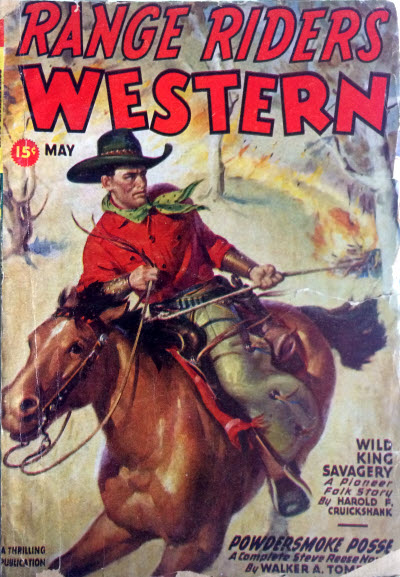 the trials and tribulations of Dal and Mary Baldwin as they carved out their piece of the Wilderness in Sun Bear Valley, Wyoming and establish a growing community. King, the great stallion Dal had fist glimpsed when he arrived in Sun Bear Valley, has returned and Dal is determined to try and breed one of his mares with the great one, but an unsavory outsider has arrived in the valley to cause trouble and sets his sights on Nan.
the trials and tribulations of Dal and Mary Baldwin as they carved out their piece of the Wilderness in Sun Bear Valley, Wyoming and establish a growing community. King, the great stallion Dal had fist glimpsed when he arrived in Sun Bear Valley, has returned and Dal is determined to try and breed one of his mares with the great one, but an unsavory outsider has arrived in the valley to cause trouble and sets his sights on Nan.




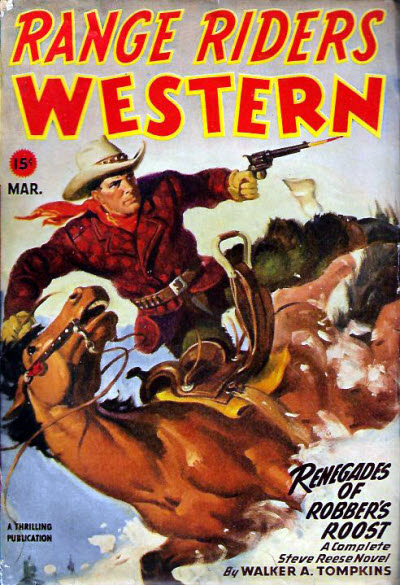 the trials and tribulations of Dal and Mary Baldwin as they carved out their piece of the Wilderness in Sun Bear Valley, Wyoming and establish a growing community. Doc gets injured as the Sun Bear Valley men work to build a cozy cabin for Phil and school-marm Nan to move into when they finally tie the knot, but Bart Manning, one of the Boxed D wranglers, has eyes for Nan and sets about to cause deadly mischief.
the trials and tribulations of Dal and Mary Baldwin as they carved out their piece of the Wilderness in Sun Bear Valley, Wyoming and establish a growing community. Doc gets injured as the Sun Bear Valley men work to build a cozy cabin for Phil and school-marm Nan to move into when they finally tie the knot, but Bart Manning, one of the Boxed D wranglers, has eyes for Nan and sets about to cause deadly mischief.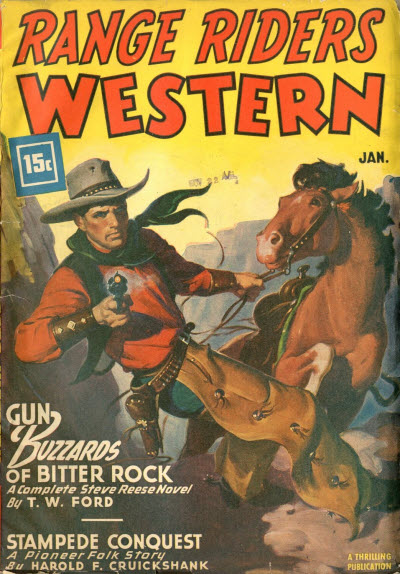 the trials and tribulations of Dal and Mary Baldwin as they carved out their piece of the Wilderness in Sun Bear Valley, Wyoming and establish a growing community. Rankin and the Box D crew try to jump the Sun Bear Valley settler’s claim on the neighboring valley by moving their cattle in to graze. The Sun Bear Valley crew try to solve their problem without any violence by bringing their sheep into the valley.
the trials and tribulations of Dal and Mary Baldwin as they carved out their piece of the Wilderness in Sun Bear Valley, Wyoming and establish a growing community. Rankin and the Box D crew try to jump the Sun Bear Valley settler’s claim on the neighboring valley by moving their cattle in to graze. The Sun Bear Valley crew try to solve their problem without any violence by bringing their sheep into the valley.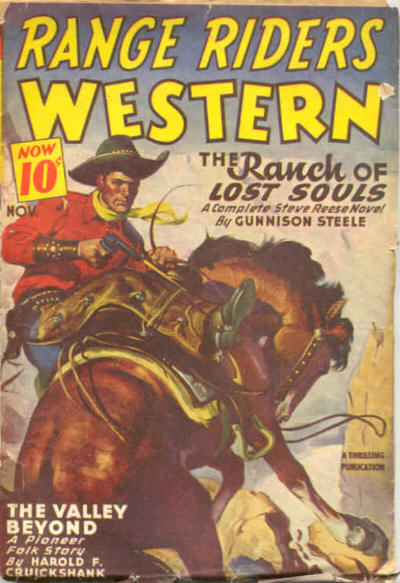 the trials and tribulations of Dal and Mary Baldwin as they carved out their piece of the Wilderness in Sun Bear Valley, Wyoming and establish a growing community. The Morrison’s young friend Phil Cody arrives with a view to squatting at the new valley Dal had discovered westward through the pass while Quirt Malotte’s brother arrive with two fellow horse thieving owlhoots to get even with Dal once and for all.
the trials and tribulations of Dal and Mary Baldwin as they carved out their piece of the Wilderness in Sun Bear Valley, Wyoming and establish a growing community. The Morrison’s young friend Phil Cody arrives with a view to squatting at the new valley Dal had discovered westward through the pass while Quirt Malotte’s brother arrive with two fellow horse thieving owlhoots to get even with Dal once and for all.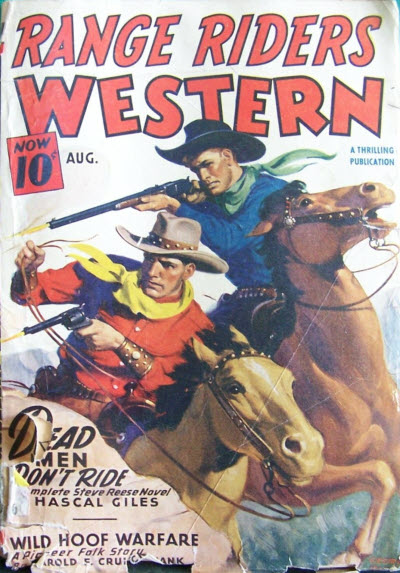 the trials and tribulations of Dal and Mary Baldwin as they carved out their piece of the Wilderness in Sun Bear Valley, Wyoming and establish a growing community. Looking to strengthen his horse breeding stock, Dal goes in search of King, the great wild stallion he had seen when he and Mary had first arrived in the valley, who has been absent from Sun Bear Valley and in the process discovers another valley beyond with close to two hundred and fifty acres of tillable land, and pasture range beyond.
the trials and tribulations of Dal and Mary Baldwin as they carved out their piece of the Wilderness in Sun Bear Valley, Wyoming and establish a growing community. Looking to strengthen his horse breeding stock, Dal goes in search of King, the great wild stallion he had seen when he and Mary had first arrived in the valley, who has been absent from Sun Bear Valley and in the process discovers another valley beyond with close to two hundred and fifty acres of tillable land, and pasture range beyond.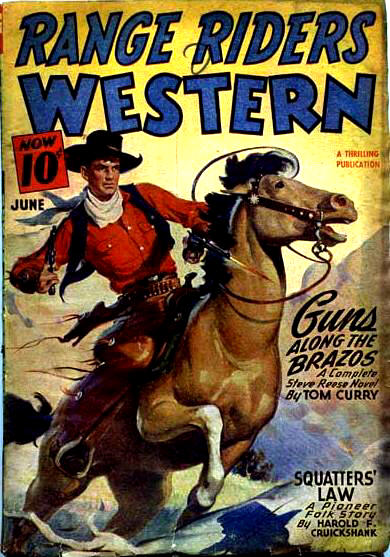 the trials and tribulations of Dal and Mary Baldwin as they carved out their piece of the Wilderness in Sun Bear Valley, Wyoming and establish a growing community. The Sun Bear Valley settlers start to worry about their rights as squatters and plan to get government surveyors in to draw up their claims as a salty outfit of owlhoots lead by a nasty piece of work known as Runkin herding about a hundred head of the mangiest looking cattle heads toward their valley.
the trials and tribulations of Dal and Mary Baldwin as they carved out their piece of the Wilderness in Sun Bear Valley, Wyoming and establish a growing community. The Sun Bear Valley settlers start to worry about their rights as squatters and plan to get government surveyors in to draw up their claims as a salty outfit of owlhoots lead by a nasty piece of work known as Runkin herding about a hundred head of the mangiest looking cattle heads toward their valley.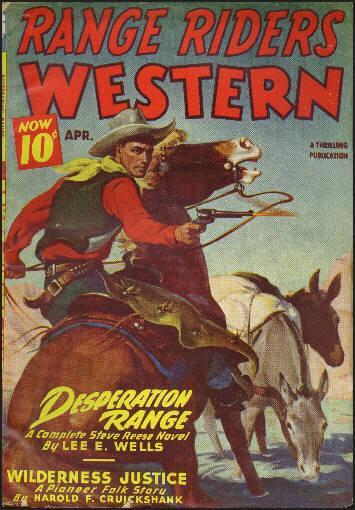 the trials and tribulations of Dal and Mary Baldwin as they carved out their piece of the Wilderness in Sun Bear Valley, Wyoming and establish a growing community. Doc runs afoul of Malotte the half-breed who has returned to rustle Dal’s horses and another wagon arrives in the valley with more settlers—The Morrisons—Jud and Olga, their eleven year old fraternal twins Martin and Maureen and eldest son Jack who is married to Rhona and has three young kids of his own—little baby Jud, five months; Nell, four, and Ollie, five. With little Jimmy Baldwin a husky four year old now and his recently born younger brother Tenby, looks like Sun Bear Valley will be needing the services of the Morrison’s niece who is a school-marm.
the trials and tribulations of Dal and Mary Baldwin as they carved out their piece of the Wilderness in Sun Bear Valley, Wyoming and establish a growing community. Doc runs afoul of Malotte the half-breed who has returned to rustle Dal’s horses and another wagon arrives in the valley with more settlers—The Morrisons—Jud and Olga, their eleven year old fraternal twins Martin and Maureen and eldest son Jack who is married to Rhona and has three young kids of his own—little baby Jud, five months; Nell, four, and Ollie, five. With little Jimmy Baldwin a husky four year old now and his recently born younger brother Tenby, looks like Sun Bear Valley will be needing the services of the Morrison’s niece who is a school-marm.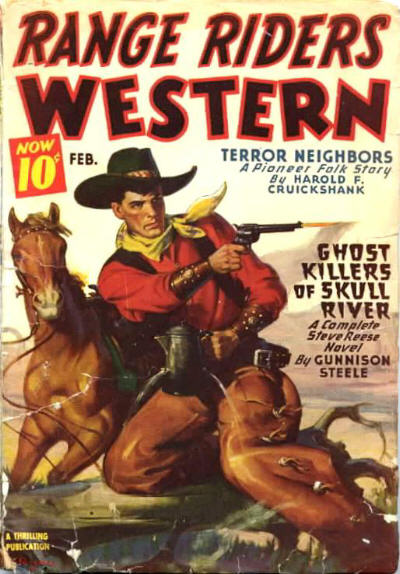 the trials and tribulations of Dal and Mary Baldwin as they carved out their piece of the Wilderness in Sun Bear Valley, Wyoming and establish a growing community. The Sun Bear settlers are menaced by Mishe, the she-grizzly, and Acheeta, the cougar and Dal knew that to grizzly and cougar alike, there was no more succulent food in all the wilds than young horseflesh. In a night, either species of varmint could wipe out the whole of Dal’s horse stock and his cow and her calf as well.
the trials and tribulations of Dal and Mary Baldwin as they carved out their piece of the Wilderness in Sun Bear Valley, Wyoming and establish a growing community. The Sun Bear settlers are menaced by Mishe, the she-grizzly, and Acheeta, the cougar and Dal knew that to grizzly and cougar alike, there was no more succulent food in all the wilds than young horseflesh. In a night, either species of varmint could wipe out the whole of Dal’s horse stock and his cow and her calf as well.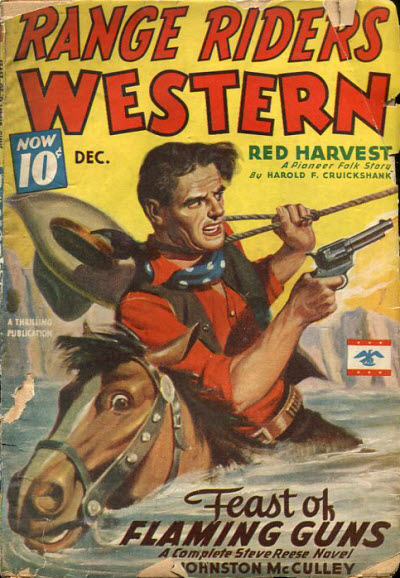 the trials and tribulations of Dal and Mary Baldwin as they carved out their piece of the Wilderness in Sun Bear Valley, Wyoming and establish a growing community. Another family arrives in the valley in the form of Tom and Ella Bruce and their infant daughter. Unfortunately for Dal, they took the advice of that rascally half-breed Quirt Malotte on their way there and their dog and flock of sheep they’ve brought with them arrive first and trample through Dal’s crop and Mary’s garden. The Bruces more than make up for it when lightning touches off a fire in the valley.
the trials and tribulations of Dal and Mary Baldwin as they carved out their piece of the Wilderness in Sun Bear Valley, Wyoming and establish a growing community. Another family arrives in the valley in the form of Tom and Ella Bruce and their infant daughter. Unfortunately for Dal, they took the advice of that rascally half-breed Quirt Malotte on their way there and their dog and flock of sheep they’ve brought with them arrive first and trample through Dal’s crop and Mary’s garden. The Bruces more than make up for it when lightning touches off a fire in the valley.